Side hustles are no longer optional in South Africa. With food inflation still above 8 percent and electricity, transport and mobile data costs climbing…
Review: Audi RS3 sedan
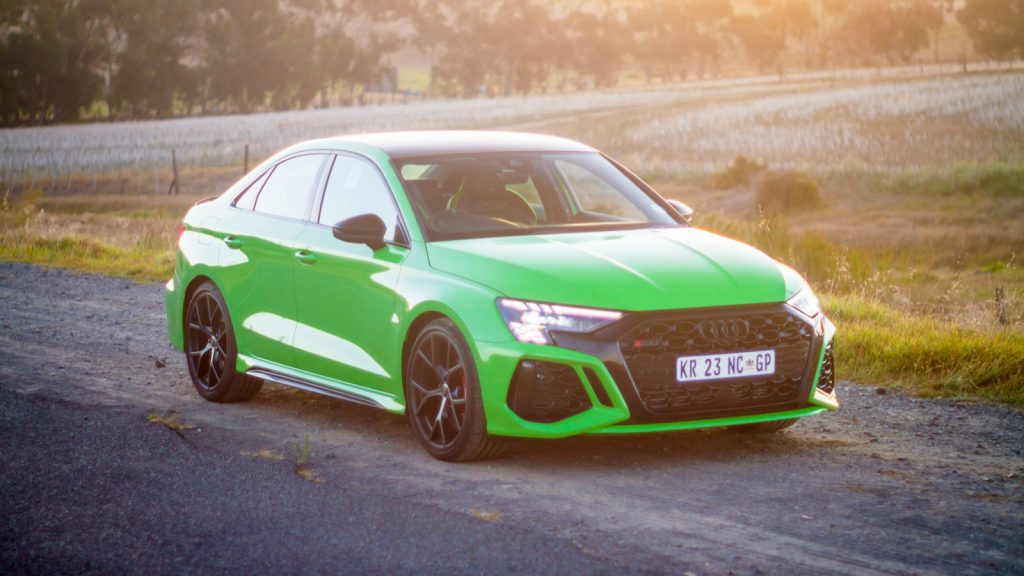
RS3 sedan has a very rare engine. But is that enough to best its rivals from AMG?
Rarity equals value. The examples are evident, from first-year university economics to the reality of Pokémon trading cars.
In the realm of expensive and collectable automobiles, rarity is a thing. Too. But what happens when brands limit their production on performance cars, which are all reasonably rare, by intention? What drives the future collectability value?
I’ll let you in on a little carfectionary secret. Engines determine rarity and value, to a great degree. V12-powered classic Ferraris are more coveted than V8s, although the V8 cars are often better to drive.
With engine sizes shrinking and cylinder counts decreasing, as the automotive industry transitions from internal combustion to a future product offering of hybrids and electric vehicles, are there still engines that will become collectable? There is. And the configuration is an odd number: 5.

Engine history matters
Audi’s company history and technical excellence aren’t symbolised by V8 and V12 engines.
The brand’s iconic Ur-Quattro was a five-cylinder engine. It’s peak performance car and most dramatic design, the R8, featured a V10. And an Audi that is likely to become very coveted in future is the latest version of the brand’s apex compact performance car: RS3.
There’s something deeply charming about a compact sedan with outrageous performance. Which is exactly the purpose of Audi’s third-generation RS3. In the sedan configuration, it features a dramatic design.
I dislike the fake exhaust ends (they’re purposely exaggerated and hide the real tailpipes inside). And the Audi RS-spec grille is too ornate. But RS3’s overall proportions and bodywork creases, harmonise to everything a compact Audi performance car should be.
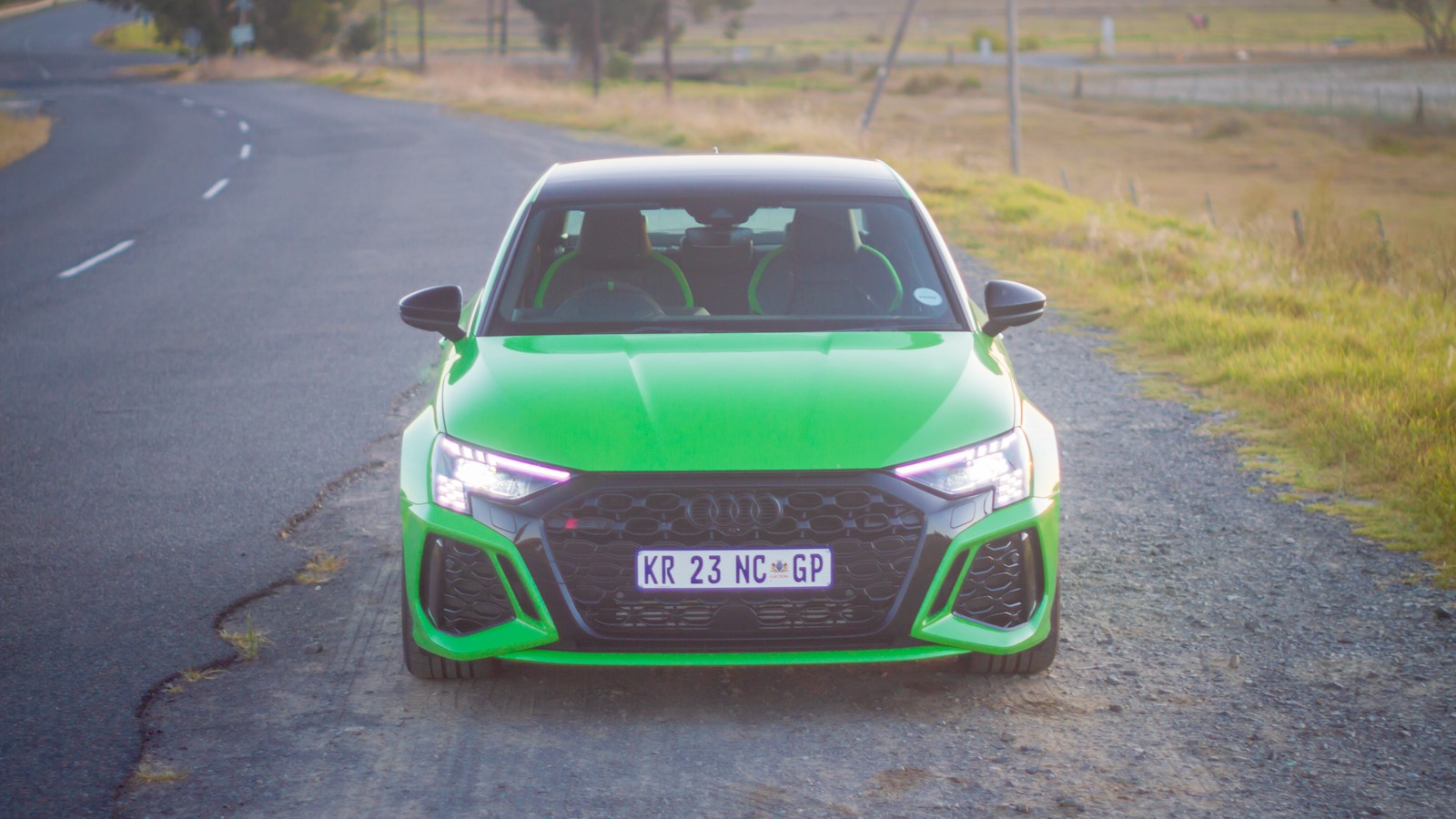
Green inside and out
Our test car’s colour code deserves mention, too: Kyalami green. And it colour matches everywhere you drive it, especially when parked in an urban environment.
The green theme is repeated inside, with a steering wheel centring strip, and lime green stitching on those awesomely comfortable quilted leather seats.
The RS3 is expensive, but some cabin plastics and buttons feel less than premium. I hold Audis to a higher standard of interior architecture and tactility. Because the German brand has delivered such terrific automotive cabin ambience, for decades. Especially under the auspices of South Africa’s Oona Scheepers, who was responsible for Audi’s cabin design revival during the early and mid-2000s.
RS3’s digital instrumentation is better than most rivals, with tasteful graphics and colour contrasting. But some of the fascia touchpoints just don’t feel RS-car special. As they do, when interacting with B7-generation RS4s and RS6s.
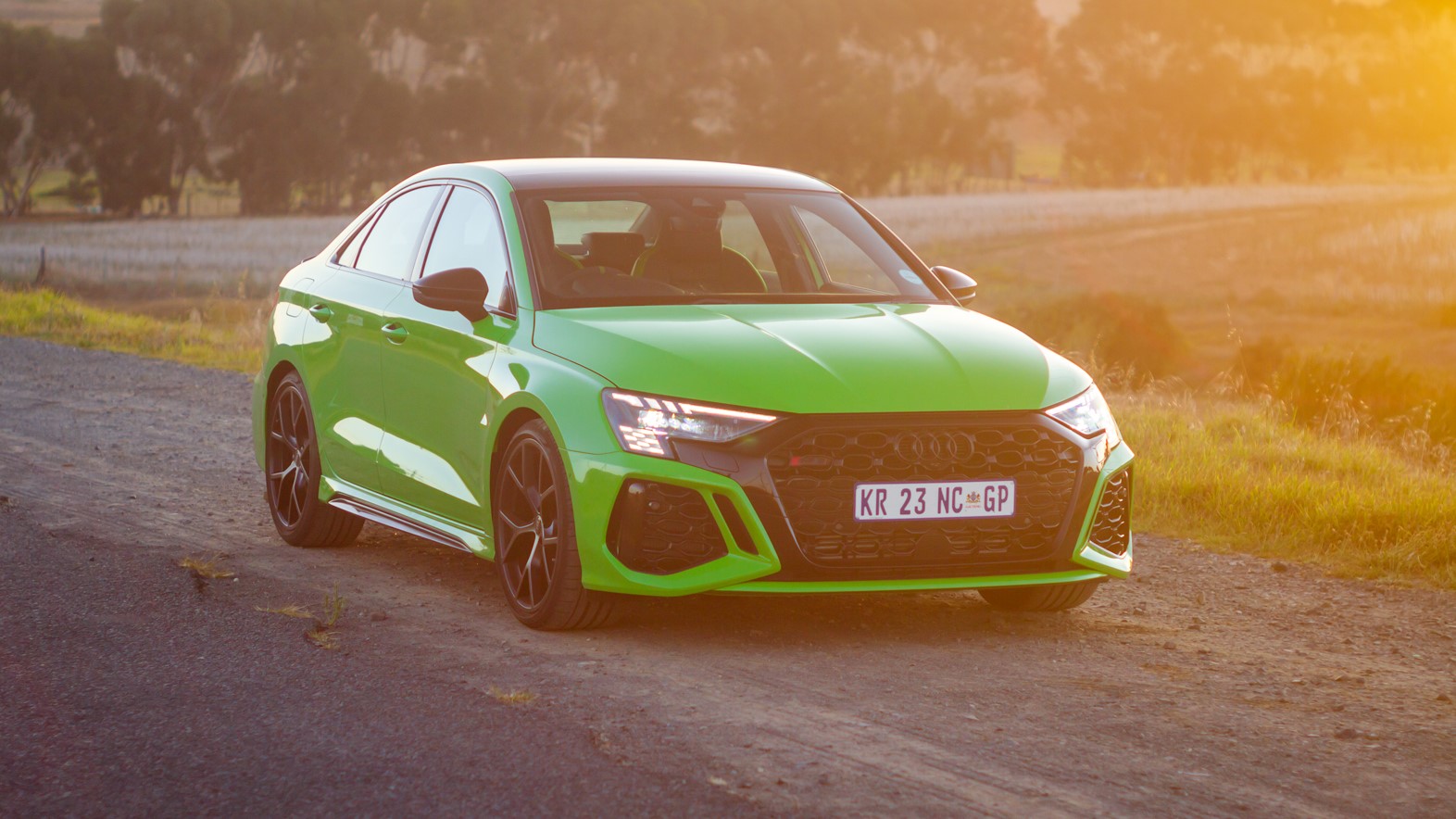
RS3 has all the power – and agility
But what’s the RS3 like to drive? Does it justify the billing and legacy expectation of its five-cylinder engine?
Most rival compact performance cars are powered by 2-litre four-cylinder engines, most notably those from AMG. And with 500cc more capacity and an additional cylinder, the RS3 has a notable power advantage and differentiated character, compared to AMG’s A45-series derivatives.
Five-cylinder engines are tricky to design. They require balancing shafts and some mechanical engineering wizardry to attain the fabled smoothness which distinguishes a five-cylinder engine. Left in its ‘comfort’ setting on the Audi Drive Select menu, RS3 is docile and feels like any A3, but for the slightly sharper steering geometry and harsher ride.
Engage the ‘dynamic’ setting and you have access to enhanced throttle response, readily deploying all 294kW. It’s a lot of power and the RS3’s acceleration is dramatic and relentless. I use the word ‘relentless’ for effect because AMG’s CLA45 has more power, but it somehow lacks the cohesive elasticity of Audi’s five-cylinder turbocharged engine, regarding acceleration.
The official 0-100km/h statistic is 3.7 seconds, but the roll-on acceleration is truly startling. Audi’s RS6 Avant has a lot more power, but also weight. For real-world overtaking scenarios, I prefer the sense of immediacy and lower inertia of an RS3 sedan’s throttle responses.
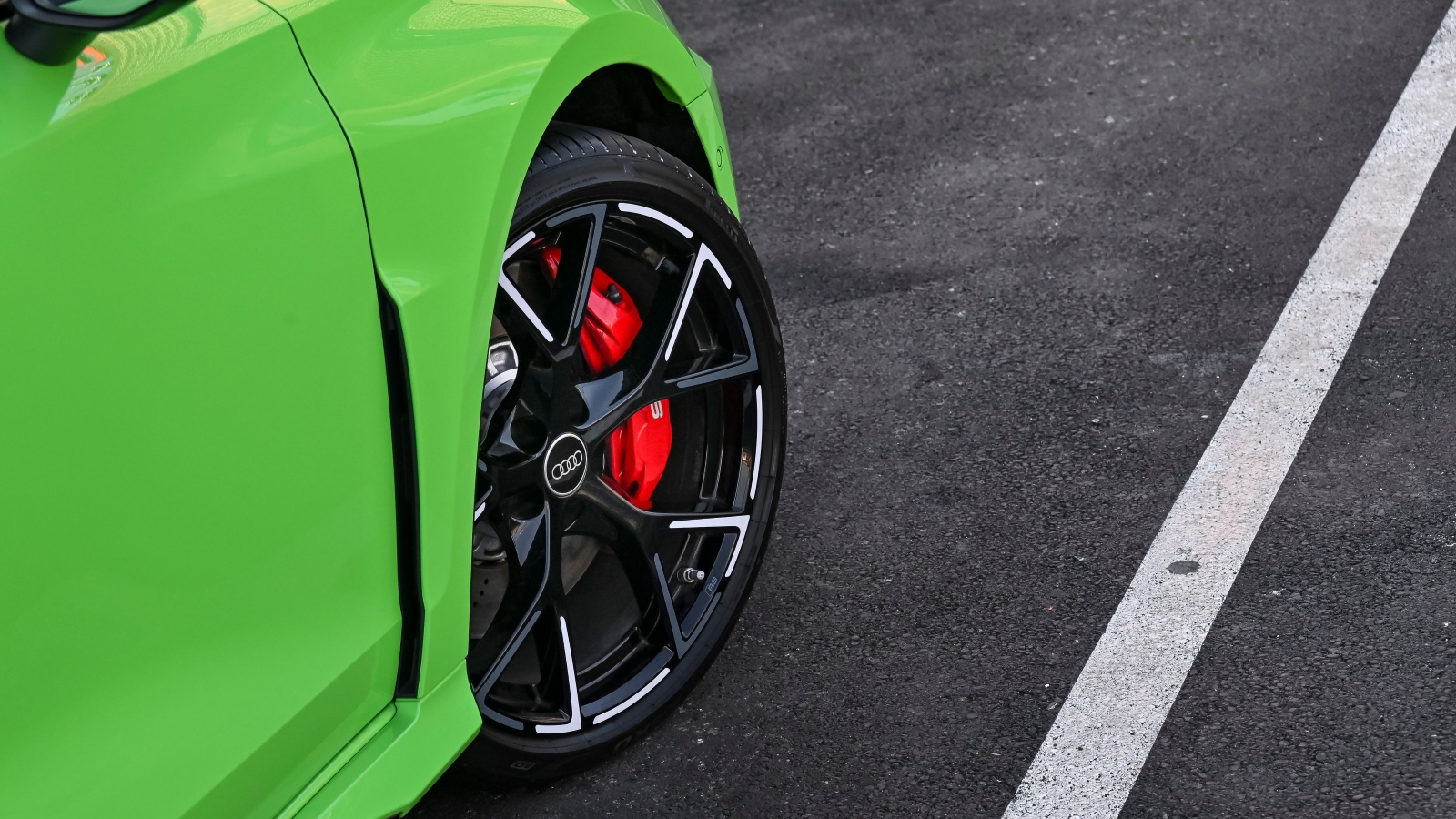
This RS3 can ‘become’ rear-wheel drive
Quattro has always been a marketing anchor. The German brand achieved great motorsport and commercial success with all-wheel. But curiously, on the RS3, you can disable drive to the front-axle, making the Quattro system rear-wheel drive. It’s a novelty that only has real purpose at a track day, or on a tight and technical mountain pass road, that you are intimately familiar with.
For those enthusiast drivers, who were often frustrated by the default understeer characteristics of Audi’s RS-cars, the more configurable all-wheel drive system has intrinsic appeal. Enhancing the driving experience without being merely a gimmick.
The default RS3 suspension and steering settings are best left in comfort on imperfectly surfaced. Mechanical grip is enormous, thanks to trick Pirelli P Zero Trofeo R tyres. They might not prove very durable on coarse South African roads, but they allow this small high-performance Audi to truly deliver on the promise of its advanced suspension geometry.
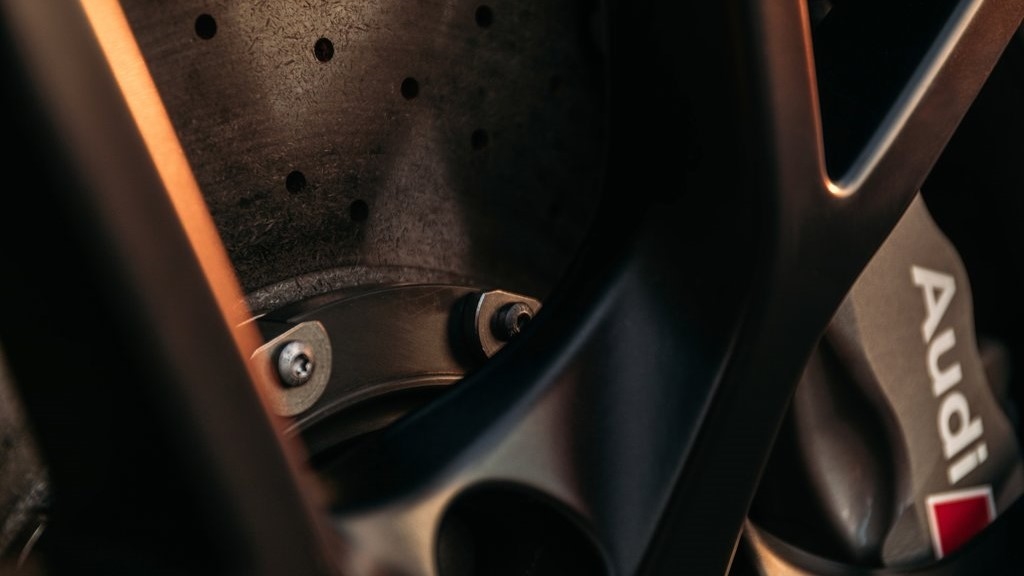
Learning to trust that brake pedal
You can have the best dampers and suspension geometries, but if the driver touchpoints aren’t ergonomic, there’s no joy in experiencing a performance car.
Audi’s renowned for its human-centric cabin design, and the RS3 sedan’s adjustability regarding seat and steering wheel position, not to mention the shape of its helm, make for a wonderfully confident driving experience.
It’s a blindingly fast car, yet it never feels beyond the control and balance of the driver’s interventions through the steering or pedals.
A note on the brakes, though. They are immensely powerful, as you’d expect, considering their size. Inexperienced drivers might struggle, at first, with the soggy brake pedal feel, which travels for a bit before triggering the bite-point.
The 380mm front brake discs are huge and appreciably powerful, and I suspect the brake booster leverage curve, has something to do with the pedal feedback. Once you trust them, they are a very assuring agent of control, as part of the Audi RS3 sedan’s overall dynamic offering.
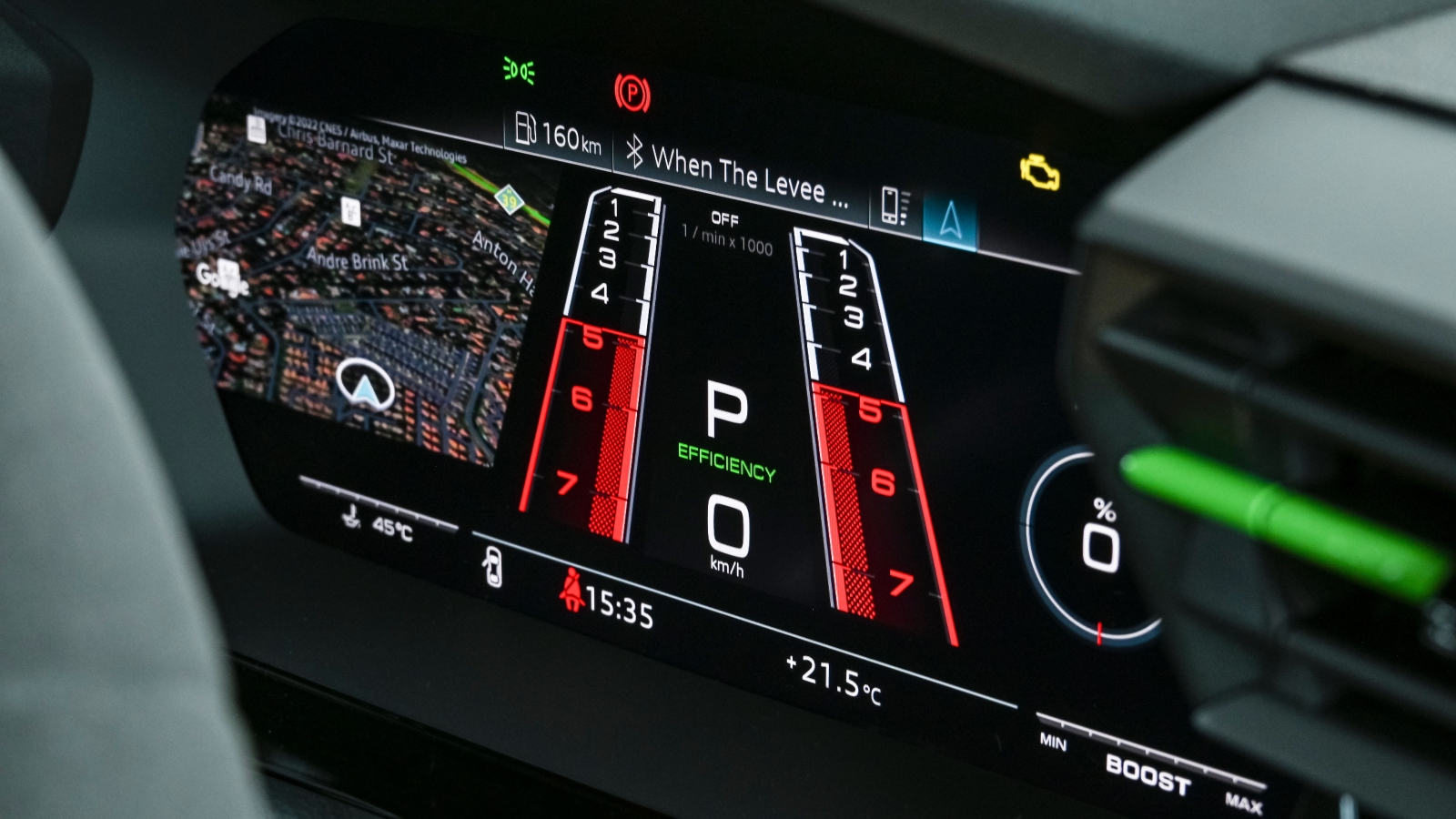
The hidden appeal of a high-performance sedan
Most of Audi’s most celebrated RS-performance cars, have been Avants (the Audi moniker for a station wagon). Notably, the RS4 and RS6 derivatives are now only produced in the Avant configuration, without any sedan option. True to demand.
So what about the latest RS3 being a sedan? In the South African context, it makes a lot of sense.
The weakness of any five-door vehicle (station wagon, hatchback, SUV or crossover), is its lack of luggage bay security. That tailgate (or fifth-door), has a large glass panel, which can be smashed to gain access to the luggage bay.
With a sedan, you benefit from the absolute luggage area security of having a metal boot. And that matters if you don’t want to take your laptop bag everywhere with you, in-store, coffee shop, lunch venue or any other social occasion.
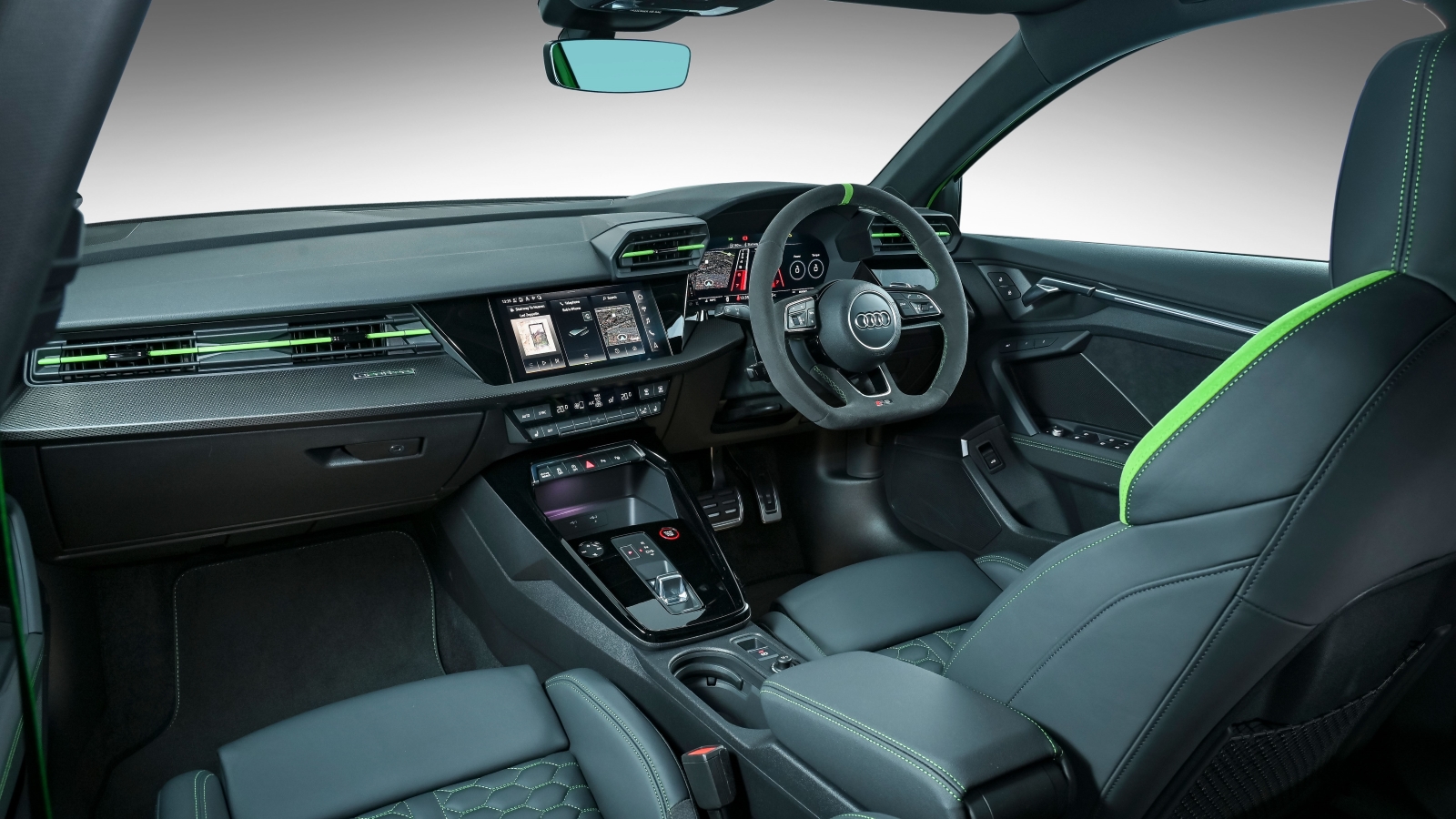
Choosing between RS3 Sportback and sedan
There is a pricing discrepancy between the RS3 Sportback and sedan, with the latter being R30 000 dearer, at R1 245 000.
Small cars with engines of great mechanical artistry are hardly ever disappointing. And RS3 is evidence of that. In a world where powertrains feel too similar, Audi offers something truly unique with RS3 and the 2.5-litre five-cylinder engine.
Four rings and five-cylinders. It’s always been a winning combination. And the latest RS3 proves that, without compromise (and yes, you absolutely have to get a Kyalami green one).


